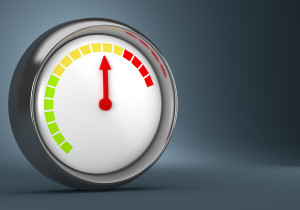
To improve things, you have to measure them
Ever since college girls starting doing Cosmo quizzes, people have been curious about self-tests – or assessment tools, as practitioners prefer to call them. Just about every week my Facebook friends offer me enticing opportunities to learn about myself by completing online questionnaires to determine “How military are you?”, “What’s the Nationality of your soul?” and even “Which Star Trek Captain are you”?
These assessments are all good fun, but more serious assessments can be truly beneficial in helping us understand our unique personality – based preferences, leadership strengths, and areas for growth. They help increase our self-awareness and often reinforce what we already suspect.
Personality assessments like the popular Myers Briggs Type Indicator help leaders better understand the inherent preferences that determine how they like to show up in the world, the types of information they favor, and how they prefer to make decisions. They help us improve our relationships with others by giving us a framework for understanding perfectly normal, but often perplexing or even frustrating, behaviors and preferences. Such assessments can also provide clues as to where we should focus our own developmental efforts.
Another type of assessment is called a 360 degree assessment because in addition to completing it yourself, you also ask a few peers, direct reports, and other stakeholders, as well as your boss – people from all around you (hence the moniker “360”) to rate you. These assessments help us look specifically at our behavior and how it is viewed by our various constituent groups. One valuable component of these tools is the ability to see how we see ourselves compares to how others see us. Again, the right data points directly to our development needs.
Assessments are not just for individuals. Teams that want to increase their collective effectiveness benefit in the same way from self-assessment. One assessment that we work with helps teams see how their team culture compares with their ideal culture. Another assessment that we like helps teams look at their communication habits and styles in order to increase the effectiveness of their communication.
All off these assessments are extremely valuable when used correctly by someone who is specifically trained in reading and interpreting psychological and behavioral assessments. And, like anything else, there are right and wrong ways to use these assessments. In order to improve things, you have to measure them. Next time we’ll look at some of the ways you can ensure that your efforts to measure things have the impact that you want on improving leadership effectiveness.


